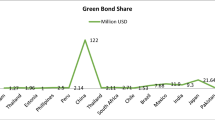Abstract
Electricity generation currently is the main industrial source of air emissions in the United States. Both researchers and practitioners are interested in conducting studies to evaluate the ecological performance of this industry, in order to propose solutions to curb emissions of air pollutants and to improve the efficiency of converting fossil resources into electric energy. In this paper, data envelopment analysis (DEA) is used to assess ecological efficiency where air emissions are used as undesirable outputs. Although conventional DEA does not require a priori information on the input and output weights, weight restrictions can be incorporated to reflect a user’s preference over the performance metrics, or to refine the DEA results. Adding weight restrictions voids the fact that DEA scores are independent of the units of measurement. To incorporate weight constraints in ecological efficiency assessment, this paper develops a DEA model that is units-invariant when weight restrictions are imposed. Moreover, the proposed model is equivalent to the standard units-invariant DEA model when weight restrictions are not present.



Similar content being viewed by others
References
Charnes, A., & Cooper, W. W. (1962). Programming with linear fractional functionals. Naval Research Logistics Quarterly, 15, 333–334.
Charnes, A., Cooper, W. W., & Rhodes, E. (1978). Measuring efficiency of decision making units. European Journal of Operational Research, 2, 429–444.
Chen, C.-M. (2014). Evaluating eco-efficiency with data envelopment analysis: An analytical reexamination. Annals of Operations Research, 214(1), 49–71.
Cherchye, L., Moesen, W., & Van Puyenbroeck, T. (2004). Legitimately diverse, yet comparable: On synthesizing social inclusion performance in the EU. Journal of Common Market Studies, 42, 919–955.
Cherchye, L., Moesen, W., Rogge, N., & Van Puyenbroeck, T. (2007). An introduction to “benefit of the doubt” composite indicators. Social Indicators Research, 82, 111–145.
Cooper, W. W., Seiford, L. M., & Zhu, J. (2011). Data envelopment analysis: History, models, and interpretations. In W. W. Cooper, L. M. Seiford, & J. Zhu (Eds.), Handbook on Data Envelopment Analysis (pp. 1–39). New York: Springer. chapter 1.
Goto, M., Otsuka, A., & Sueyoshi, T. (2014). DEA (Data Envelopment Analysis) assessment of operational and environmental efficiencies on Japanese regional industries. Energy, 66, 535–549.
Korhonen, P. A., & Luptacik, M. (2004). Eco-efficiency of power plants: An extension of data envelopment analysis. European Journal of Operational Research, 154(2), 437–446.
Keeney, R. L., See, K. E., & von Winterfeldt, D. (2006). Evaluating academic programs: With applications to U.S. graduate decision science programs. Operations Research, 54(5), 813–828. 1011–1013.
Lozano, S., Villa, G., & Brannlund, R. (2009). Centralized reallocation of emission permits using DEA. European Jounal of Operational Research, 193(3), 752–760.
Roll, Y., & Golany, B. (1993). Alternative methods of treating factor weights in DEA. OMEGA, 21(1), 99–109.
Ramón, N., Ruiz, J. L., & Sirvent, I. (2010). A multiplier bound approach to assess relative efficiency in DEA without slacks. European Journal of Operational Research, 203, 261–269.
Ruiz, J. L., & Sirvent, I. (2012). On the DEA total weight flexibility and the aggregation in cross-efficiency evaluations. European Journal of Operational Research, 223, 732–738.
Sarkis, J. (2006). The adoption of environmental and risk management practices: Relationships to environmental performance. Annals of Operations Research, 145, 367–381.
Sarkis, J., & Cordeiro, J. J. (2012). Ecological modernization in the electrical utility industry: An application of a bads-goods DEA model of ecological and technical efficiency. European Journal of Operational Research, 219, 386–395.
Sarrico, C. S., & Dyson, R. G. (2004). Restricting virtual weights in data envelopment analysis. European Journal of Operational Research, 159, 17–34.
Seiford, L. M., & Zhu, J. (2002). Modeling undesirable factors in efficiency evaluation. European Journal of Operational Research, 142(1), 16–20.
Sueyoshi, T., & Goto, M. (2012). DEA radial measurement for environmental assessment and planning: Desirable procedures to evaluate fossil fuel power plants. Energy Policy, 41(1), 422–432.
Thanassoulis, E., Portela, M. C., & Allen, R. (2004). Incorporating value judgments in DEA. In W. W. Cooper, L. M. Seiford, & J. Zhu (Eds.), Handbook on data envelopment analysis (pp. 99–138). Boston: Kluwer. chapter 4, 2004.
Tone, K., & Tsutsui, M. (2010). Dynamic DEA: A slacks-based measure approach. OMEGA, 38, 145–156.
Zhu, J. (2014). Quantitative models for performance evaluation and benchmarking: DEA with spreadsheets (3rd ed.). New York: Springer.
Acknowledgments
The authors are grateful for the comments and suggestions made by two anonymous reviewers. Dr. Juan Du thanks the support by the National Natural Science Foundation of China (Grant No. 71471133 & 71432007) and the Youth Project of Humanities and Social Science funded by Tongji University (Grant No. 20141872). This paper is partially supported by the Priority Academic Program Development of Jiangsu Higher Education Institutions (China).
Author information
Authors and Affiliations
Corresponding author
Rights and permissions
About this article
Cite this article
Cook, W.D., Du, J. & Zhu, J. Units invariant DEA when weight restrictions are present: ecological performance of US electricity industry. Ann Oper Res 255, 323–346 (2017). https://doi.org/10.1007/s10479-015-1881-x
Published:
Issue Date:
DOI: https://doi.org/10.1007/s10479-015-1881-x




